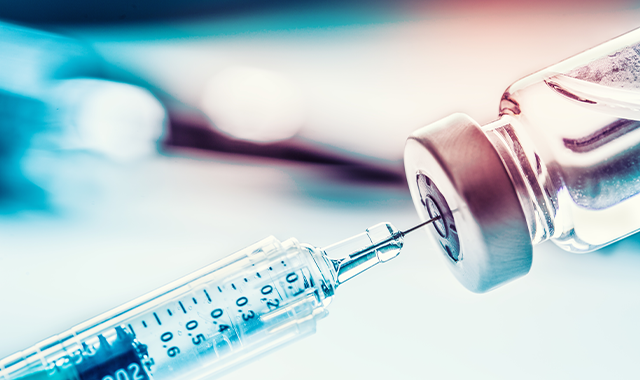Scientists Are One Step Closer to Needleless Hepatitis B Vaccine
Medical researchers and physicists are collaborating on oral vaccine research.

An international collaboration between research centers has led researchers a step closer to a needleless hepatitis B vaccine.
Physicists from the Niels Bohr Institute in Denmark and researchers from University of São Paulo and the Butantan Institute, both in Brazil, have joined forces to develop a new approach to encapsulating a hepatitis B vaccine to make it more effective within the body after being swallowed.
“We have used a technology commonly used in solid state physics to explore how the vaccine behaves within a particular type of encapsulation,” says Heloisa Bordallo, PhD, an associate professor at the Niels Bohr Institute, in a release announcing the findings. “This has yielded crucial information that would not otherwise have been achievable.”
Trending: Avoiding Patient Privacy Missteps
The challenge to developing an oral vaccine is finding a way to encapsulate the vaccine so that it can endure the digestive process. An oral form of a hepatitis vaccine could have important global implications, particularly for developing countries where many may not be vaccinated against the disease.
Researchers at the University of São Paulo had already discovered that the silica-material SBA-15 works well to encapsulate the vaccine, but they had also found the vaccine wasn’t always effective, researchers said.
By teaming with Danish physicists at the Niels Bohr Institute, the team was able to use a technique that “combines x-ray and neutron imaging” to create three-dimensional images of the inside of the SBA-15 silica. They discovered that the vaccine tended to clump within the silica, which would often impair effectiveness.
“When we scientists venture beyond our comfort zone and deploy each other’s knowledge across disciplines, entirely new possibilities can emerge,” Bordallo says of the unique partnership.
The process has allowed the team to identify what made the vaccine less effective and how to optimize it in the future. “We know exactly how much vaccine should be put in the silica capsule for it to work best in the body and the clinical trials can be better interpreted,” Bordallo says.
Using the 3-D imaging technique allowed researchers to “open new paths to overcome the challenges in the development of the oral vaccine, by allowing direct visualization of the components within the encapsulation, according to and article by the researchers in Scientific Reports.
“Being able to map the antigen distribution within the carrier, leads to crucial information needed for a complete understanding of the results from biological assays,” the authors wrote.
Read More: Side Effects of the Shingles Vaccines
According to the World Health Organization, there are an estimated 257 million living with hepatitis B virus infection across the world. The disease resulted in 887,000 deaths in 2015.
An oral form of the vaccine could help improve vaccination rates and lessen the impact of this serious disease. A needleless vaccine also wouldn’t require refrigeration and could reduce administration costs.
“Getting rid of needles being poked into the arms of little children is an advantage in and of itself,” Martin K. Rasmussen, one of the lead authors of the paper and a former student at Niels Bohr Institute said in the release. “It also eliminates any need to sterilize needles and possible side effects such as swelling and infection.”